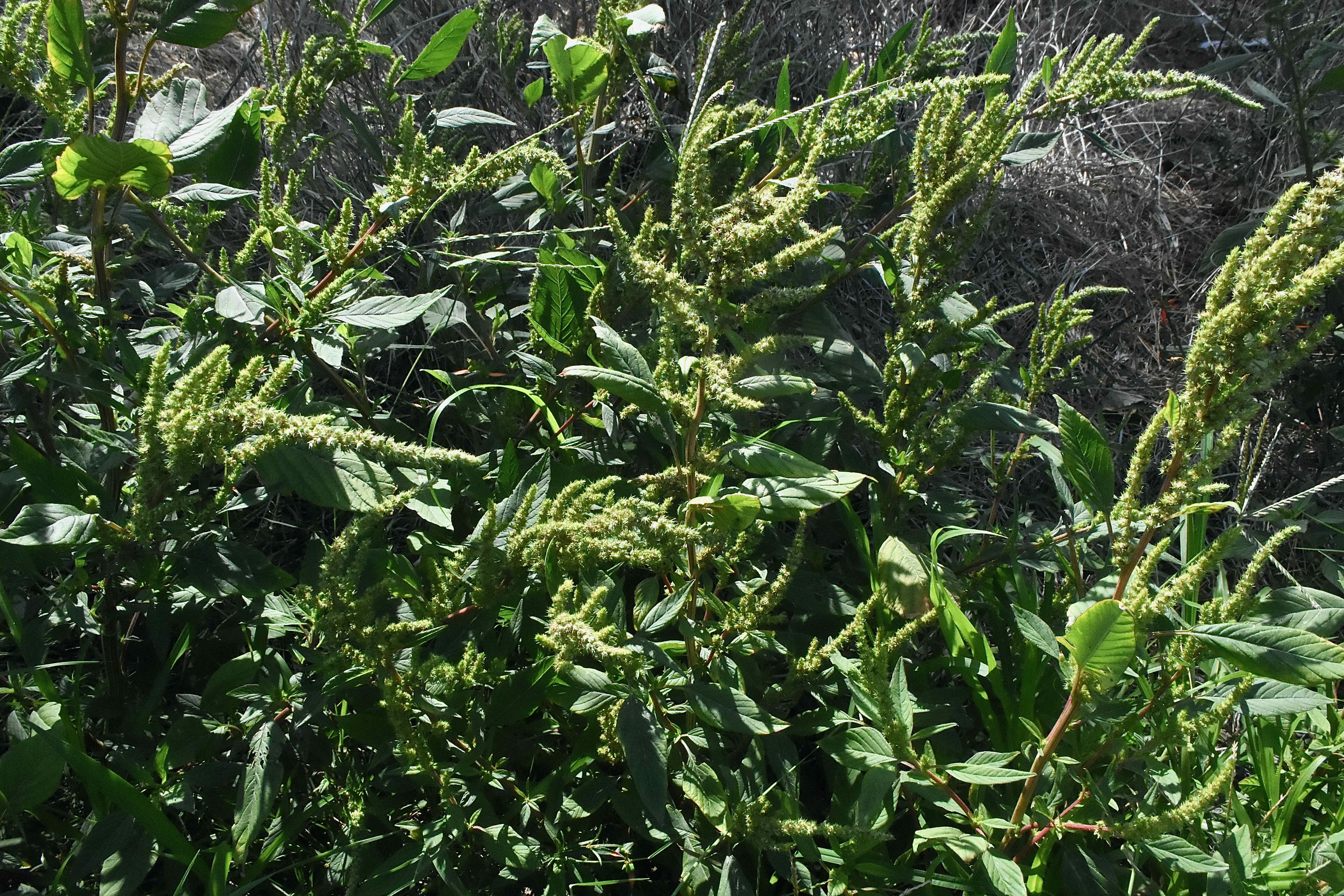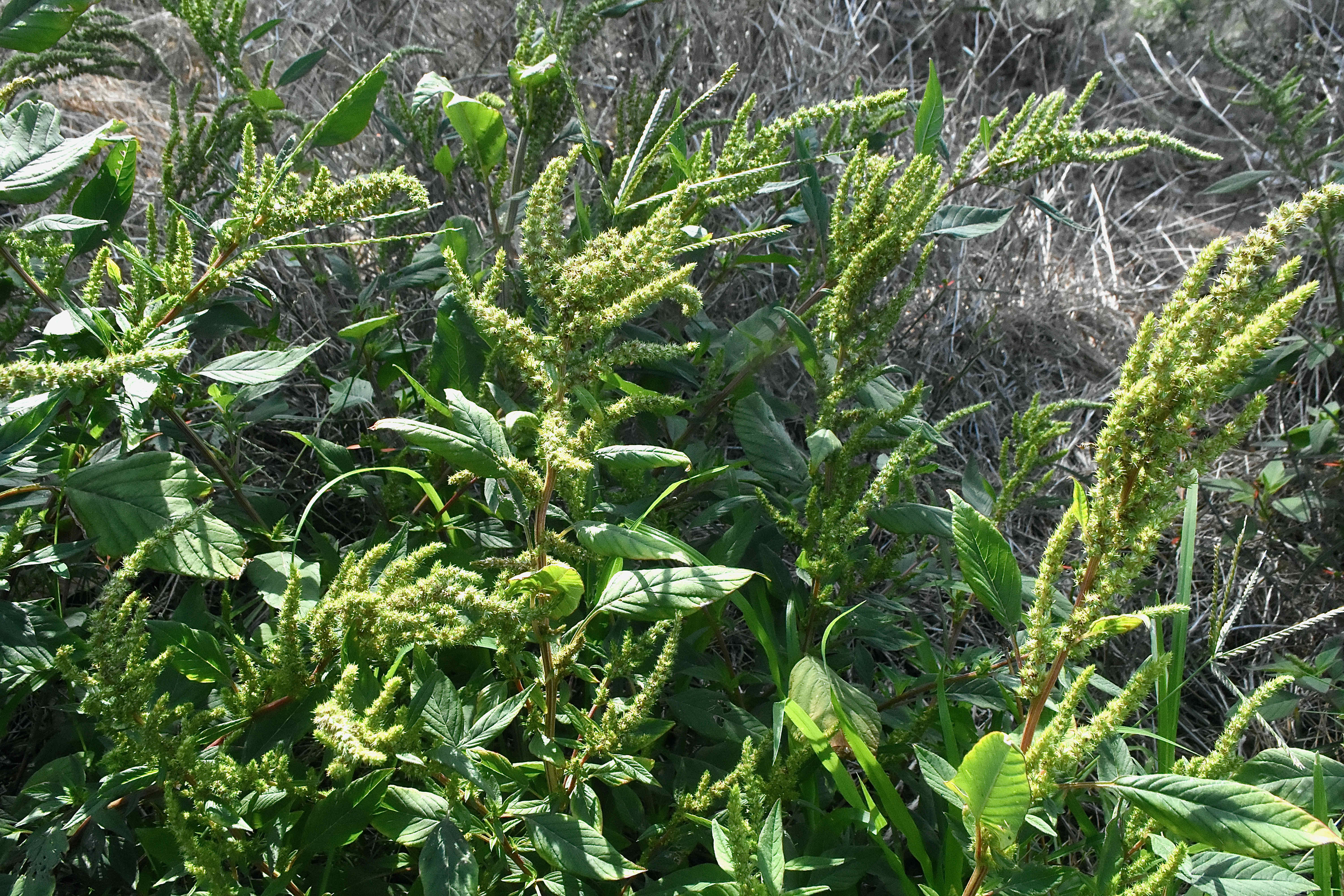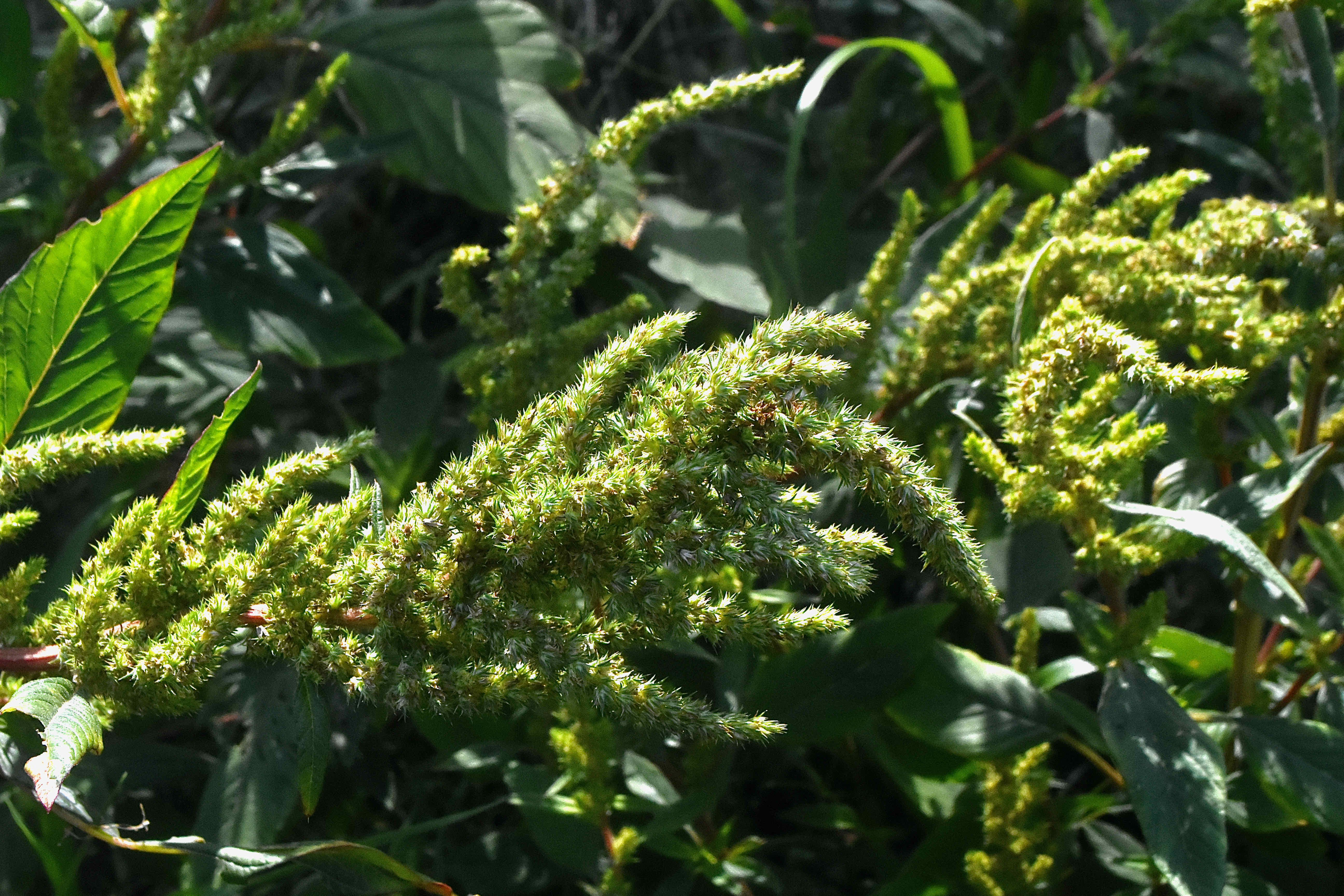
Pigweed, photographed at Seacrest Scrub Natural Area, Boynton Beach, Palm Beach County, in April 2021.
Pigweed, Amaranthus hybridus, giveth and it taketh, it's both blessing and curse. It's an extremely useful plant, providing food and medicine for many people, but also a weedy pest that invades crop fields and seriously reduces yields.
It's a plant found around the globe, in North and South America, in Europe, Africa and Asia. It's found throughout most of Florida, both in the Peninsula and the Panhandle, but whether it is a native of the Sunshine State might be a matter of definition; some say it is, others not.
Its can vary in its looks considerably, and like amaranths generally, it hybridizes easily. Pigweed can be anywhere from one to six feet tall, generally erect, the stems green or a reddish purple. The leaves are simple, vary in shape from oval to lance-like — long and narrow — with either sharp or roundish point. The petioles, or leaf stalks, are long, causing the leafs themselves to droop a bit. The leaves are arranged alternately and become progressively smaller farther up the stem.
The flowers are small, greenish yellow and gathered along a stalk called an inflorescence. Showy would not be a word used to describe them, even in aggregate. Blooming season here is spring through fall; in colder places, June through October. The flowers produce a fruit called a utricle that turns tan as it ages and eventually splits open to disperse its seeds. A single pigweed plant can produce as many as a 100,000 seeds in a year, which is a problem when growing in a cultivated field.
It's an extremely adaptable plant, takes to a variety of soils and conditions. Favorite habitats include cultivated and fallow fields, roadsides, railroad beds, riverbeds and more. It likes full sun.
Pigweed is grown in places for food, particularly India. The leaves are eaten as cooked greens, the seeds as grain. The plant is also used to make yellow and green dyes. Native Americans cooked and dried the leaves for storage, ate them as greens and in soups. The seeds would be cooked into either a mush or into dumplings. The Cherokee used the leaves as an astringent, to stop excessive menstrual bleeding.
The Institute for Regional Conservation considers pigweed as a non-native. Its natural range includes the southwestern United States, Mexico and Central and South Americas. The U.S. Department of Agriculture classifies pigweed as a native plant throughout the lower 48 states, excluding Wyoming and Utah, where apparently it's not found. The difference likely comes down to a matter of how the two agencies define "native."
Other common names include slim amaranth, green amaranth, green pigweed and hybrid amaranth. It is a member of Amaranthaceae
Click on photo for larger image
Links for Pigweed



